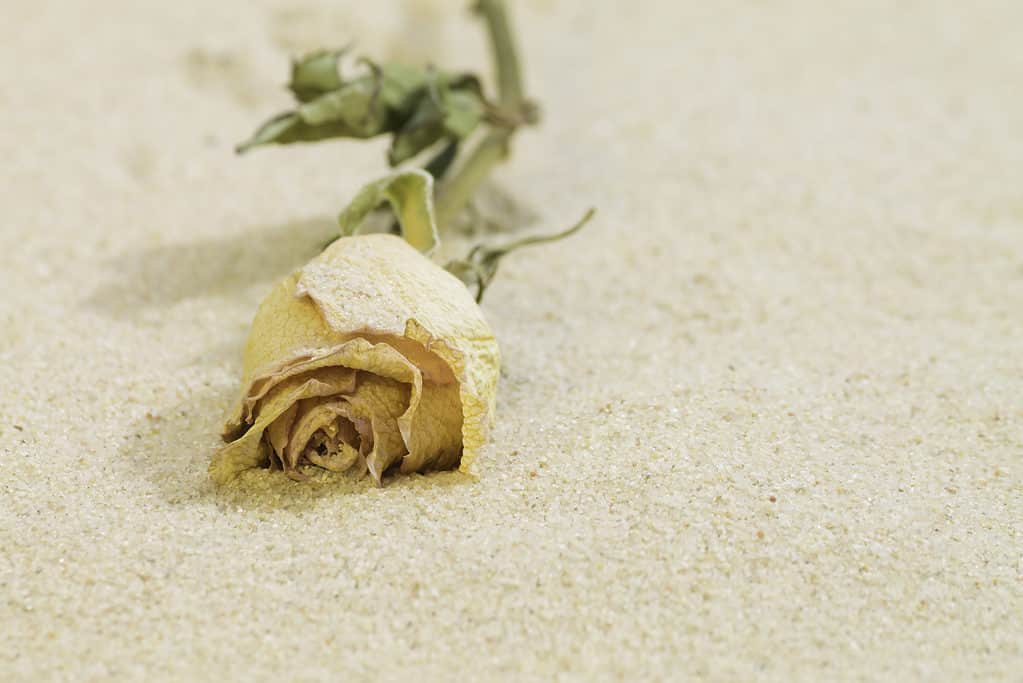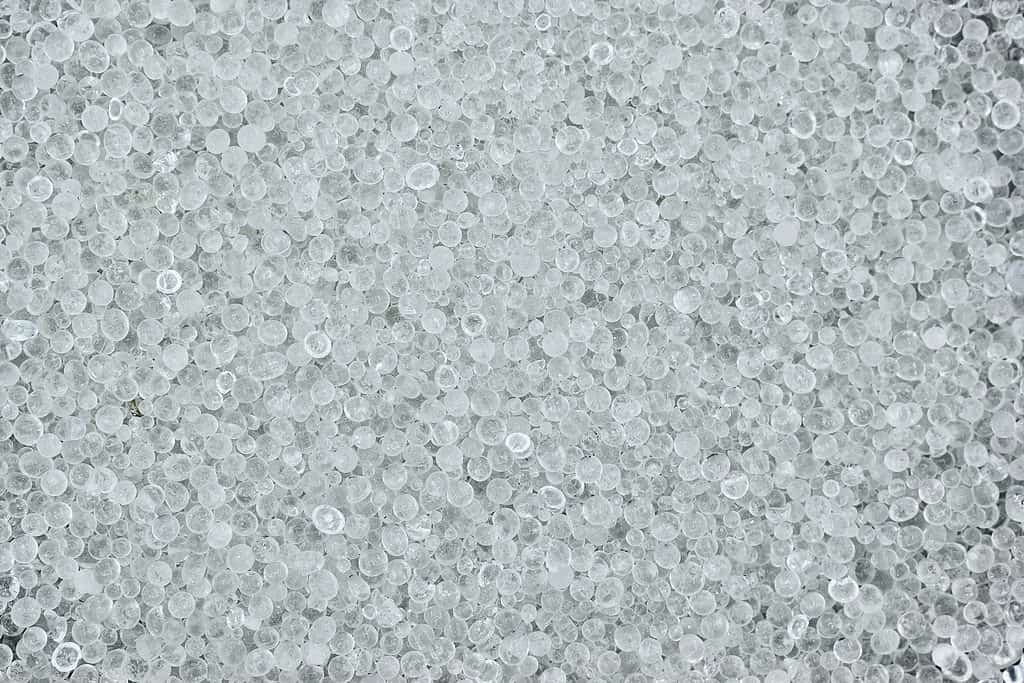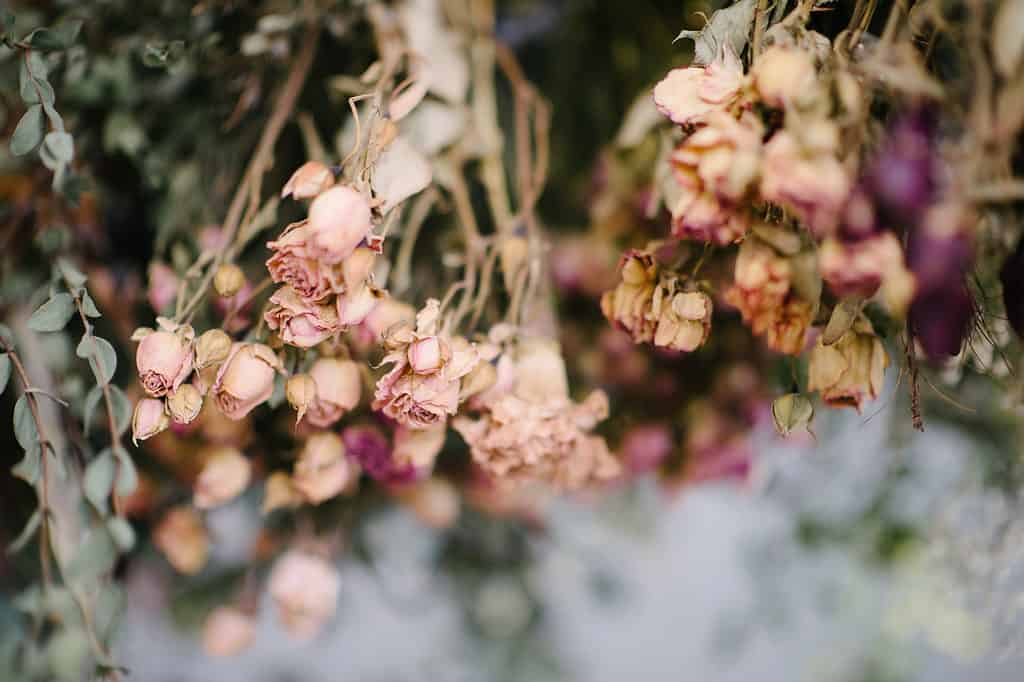Roses are often part of life’s biggest celebrations—dates, engagements, weddings, birthdays, anniversaries, and on and on. These flowers signify moments we never want to forget, so why not keep those very same roses forever? While that seems impossible since cut roses begin to wilt in about a week, it is actually possible to keep those roses for the long term if you properly dry them.
There are five different ways you can properly dry roses. It’s important to note that all of these drying processes need to begin before the roses start to wilt or turn brown. Let’s talk about how you can dry those special roses!
Air Drying

To air-dry roses, hang them upside down for 3-4 weeks.
©Marie Shark/Shutterstock.com
This is the most common and least expensive method of drying roses. Simply remove the leaves and tie a string or rubber band around the stems. Hang the roses upside down in a dark, dry area that has good air circulation. This method of drying is super easy and the stems are preserved. The process takes about 3-4 weeks and there is a risk of mold before the roses are completely dry. A well-ventilated area will cut down on the mold danger.
Pressing Roses

Pressing roses is a very common way to preserve them.
©New Africa/Shutterstock.com
In this simple process, roses are pressed using a heavy object. This method cannot preserve the stems, though.
To press roses, remove the stems and arrange the petals as you would like them. Open a heavy book and place a paper liner inside. Place the rose petals on the paper liner and close the book. Check the petals about once a week. The entire drying process will take a month or so.
Microwave Drying

It may sound surprising, but you can use your microwave to dry roses.
©iStock.com/VvoeVale
You will need two coffee filters and two microwave-safe plates. Place the rose between the coffee filters and then place the filters and roses between the two plates. Microwave them for one minute and then check the dryness of the rose. Using new coffee filters, microwave them for another minute. Keep repeating this process until the roses are dry.
This is a fast method for drying roses, but it is not guaranteed. Don’t use all the roses from a special occasion in this process at once. It may take a few tries to determine the right timing to dry the roses. If you only have a single flower and you want to be sure you can dry that one, use one of the longer, but more reliable methods.
Sand Drying

Sand-drying is an easy, low-cost method of drying roses.
©lilavadee/Shutterstock.com
In this method, sand is used to draw the moisture out of the rose. You can preserve the entire rose bloom through sand drying.
Cut the rose, leaving about an inch of the stem. Pour a bit of sand into a bucket or other container. Place the rose bloom in the container, “planting” the stem in the sand. Then gently pour more sand to cover the rose. In a month, remove the rose from the sand.
Silica Gel Drying

Silica gel can be used to dry roses.
©iStock.com/Zay Nyi Nyi
Silica gel is a desiccant. It is found in those little packs that absorb moisture from a wide variety of products. Silica gel can also be used to dry roses. The method is similar to sand drying, but it doesn’t take as long and the contents are reusable.
Cut the roses, leaving one inch of the stem attached to the bloom. Using an airtight container (that’s important!), cover the bottom with silica gel crystals. “Plant” the rose in those crystals and then completely cover the rose with more crystals. Be sure the silica gel crystals work into all crevices of the rose. Seal the container and then check the rose every couple of days. The process may take a week or two.
Caution: while silica gel is non-toxic, it can still be potentially dangerous.
Additional Method

Don’t attempt to freeze-dry roses at home!
©Africa Studio/Shutterstock.com
There is a sixth method of drying roses: freeze drying. This method, however, requires professional equipment. It’s not something you can do in your home freezer. Unless you have (or are planning to start) a floral business, this method is not cost-effective. You can have your roses professionally freeze-dried, but it will cost you anywhere from $100-700, depending on a host of different factors.
Which Method to Choose?
Choosing the right method of rose drying depends on a variety of considerations. How much time can you devote to the process? What is your budget for supplies? Do you want to preserve the petals or the entire rose bloom? The answers to those questions will determine which method is best for you.

There are many ways to dry roses, so choose the one that works best for you.
©Pirat Pirat/Shutterstock.com
Whatever drying method you choose, it is not difficult to dry and preserve roses. When roses mark an extraordinary moment in your life, you can dry those flowers and keep them as a way to always remember that special time
Up Next:
- 10 Types Of Old-Fashioned English Roses
- How To Grow Long-Stem Roses
- 13 Types Of Roses for Gardeners, Florists, and More
The photo featured at the top of this post is © iStock.com/Holly Cromer
Thank you for reading! Have some feedback for us? Contact the AZ Animals editorial team.






